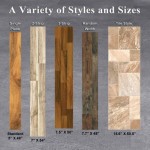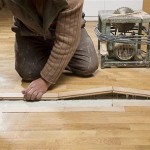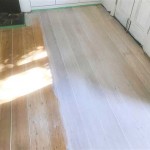Can You Put Vinyl Floor Tile On Walls?
Vinyl floor tile offers a durable, water-resistant, and aesthetically versatile flooring solution. Its practicality has led many to consider its application beyond the floor and onto walls. This article explores the feasibility, benefits, drawbacks, and installation process of using vinyl floor tile for wall applications.
Durability and Water Resistance
Vinyl floor tile is engineered to withstand heavy foot traffic, impacts, and spills. This inherent durability translates well to wall applications, making it a suitable choice for high-traffic areas or spaces prone to moisture, such as bathrooms, kitchens, and laundry rooms. The water-resistant nature of vinyl flooring provides an added layer of protection against splashes and humidity, preventing mold and mildew growth.
Aesthetic Versatility
Vinyl floor tile comes in a vast array of colors, patterns, and textures, mimicking the appearance of natural materials like wood, stone, and ceramic. This design flexibility allows for creative wall treatments, enabling homeowners to achieve various aesthetic styles, from rustic farmhouse to modern minimalist. The ability to mix and match different tile designs further expands the creative possibilities, offering a unique and personalized touch to any space.
Cost-Effectiveness
Compared to other wall covering options like ceramic tile or natural stone, vinyl floor tile often presents a more budget-friendly alternative. The material itself is generally less expensive, and the installation process can be simpler and less time-consuming, potentially reducing labor costs. This cost-effectiveness makes vinyl floor tile an attractive option for budget-conscious homeowners seeking durable and stylish wall solutions.
Installation Considerations
While vinyl floor tile can be installed on walls, the process differs slightly from floor installation. Walls present unique challenges, such as gravity and the need for precise alignment. Using a strong adhesive specifically designed for vinyl tile is crucial for ensuring a secure bond. Additionally, proper surface preparation is essential. Walls must be clean, smooth, and free of any debris or imperfections that could compromise the adhesion of the tile.
Weight and Wall Suitability
The weight of vinyl floor tile is a factor to consider before installation. Thicker, heavier tiles may require a stronger adhesive or additional support, especially on walls made of lighter materials like drywall. Assessing the wall's structural integrity is crucial to ensure it can support the weight of the chosen tile. In some cases, reinforcing the wall structure may be necessary.
Ventilation and Moisture
While vinyl tile itself is water-resistant, trapped moisture behind the tiles can lead to issues such as mold growth. Proper ventilation is crucial, especially in areas with high humidity. Ensuring adequate airflow behind the tiles can prevent moisture buildup and maintain the integrity of the wall structure. Using a waterproof membrane behind the tiles can provide an additional layer of protection against moisture infiltration.
Adhesive Selection
Choosing the correct adhesive is paramount for a successful installation. Different adhesives are formulated for different types of vinyl tile and wall substrates. Using an incompatible adhesive can result in poor adhesion, leading to tiles peeling or falling off the wall. Consulting with a flooring professional or adhesive manufacturer can help ensure the selection of the appropriate adhesive for the specific project.
Surface Preparation
Thorough surface preparation is essential for achieving a smooth and even tile installation. Walls should be cleaned and free of dust, dirt, grease, and any loose paint or wallpaper. Any imperfections, such as cracks or holes, should be filled and sanded smooth. A primer may be necessary to ensure proper adhesion of the adhesive and to create a uniform surface for the tile.
Maintenance and Cleaning
Vinyl floor tile installed on walls is relatively easy to maintain and clean. Regular dusting and wiping with a damp cloth are usually sufficient to keep the tiles looking their best. Avoid using abrasive cleaners or scrubbing pads, which can scratch the surface of the tile. For tougher stains, a mild cleaning solution specifically designed for vinyl flooring can be used.
Ultimately, installing vinyl floor tile on walls requires careful planning and execution. Considering the factors discussed above, including weight, adhesive selection, surface preparation, and ventilation, will contribute to a successful and long-lasting installation.

Can You Install Vinyl Flooring On Walls L Antic Colonial

Can You Use Vinyl Flooring On Bathroom Walls Answered W Tips

Bathroom Shower Vinyl Wall Panel Vs Tiles Which One Should You Choose Step Guard Floors

Can You Put Vinyl Flooring Over Tile A Complete Guide Teka

Laminate And Vinyl Cladding Finfloor

Vinyl Floor Tiles On Bathroom Wall

Can You Use Vinyl Plank Flooring On Walls Home Design

Can I Use Waterproof Flooring For Shower Walls

Design Tips For Matching Ceramic And Vinyl Floor Wall Tiles Builddirect Blog

Vinyl Flooring Multipanel
See Also







